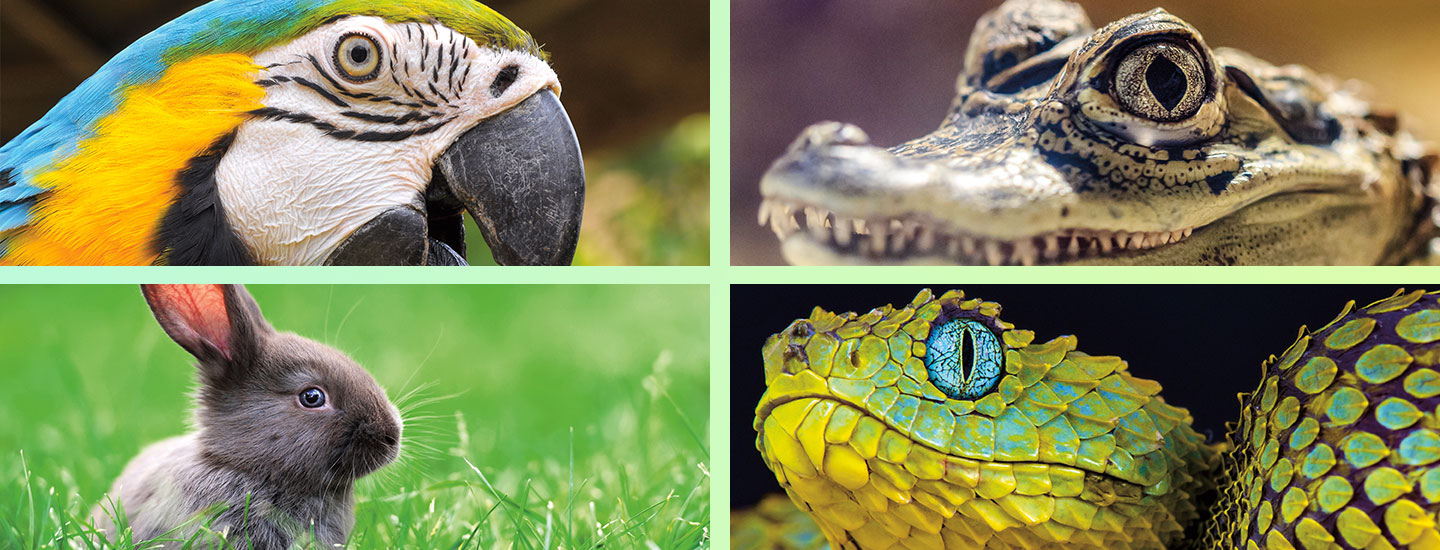Arianne Pontes Oriá
To measure this owl’s tears, Oriá places strips of paper under its eyes. Don’t worry—it doesn’t hurt the owl.
She doesn’t make animals cry for her work, but Arianne Pontes Oriá does study their tears! The Brazilian veterinarian carefully collects an animal’s tears—from owls to crocodiles—and places them on microscope slides. Under magnification, each animal’s tears look like a snowflake, revealing their unique structure. Studying this structure helps Oriá understand these adaptations, including how some animals can go so long without blinking.
Only humans cry to express emotion, but all animals have tears. Tears are essential to keep eyes healthy because they protect the cornea, the clear outermost part of the eye. The watery substance contains proteins, salts, and oxygen that nourish the cornea. Normally blood provides nutrients and oxygen to cells, but there are no blood vessels in the cornea. Blinking helps spread tears across the eye, keeping it clean and moist.
“Different animals have a different stickiness to their tears,” says Sara Thomasy. She’s an animal ophthalmologist who studies and treats animal eyes. If a crocodile’s tears weren’t so thick, for example, they would wash away in the swampy water.
She doesn’t make animals cry for her work. But Arianne Pontes Oriá does study their tears! The Brazilian veterinarian carefully collects the tears of animals from owls to crocodiles. She places them on slides and examines them under a microscope. Up close, each animal’s tears have a unique structure. Studying them helps Oriá understand how different types of tears help animals survive.
Only humans cry to express emotion. But all animals have tears. Tears keep eyes healthy by protecting the cornea, the clear outer part of the eye. Most cells in the body get the nutrients and oxygen they need from the blood. But there are no blood vessels in the cornea, so tears provide nourishment instead. Blinking helps spread tears across the eye, keeping it clean and moist.
“Different animals have a different stickiness to their tears,” says Sara Thomasy. She’s veterinarian who studies and treats animal eyes. A crocodile’s tears are very thick, for example. If they weren’t, they would wash away in the swampy water where crocodiles live.

